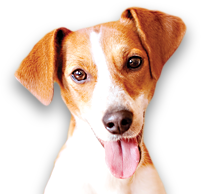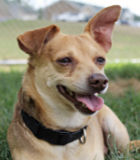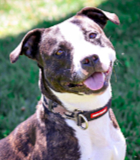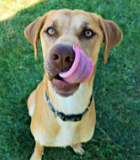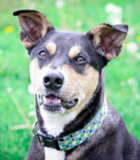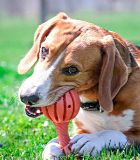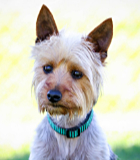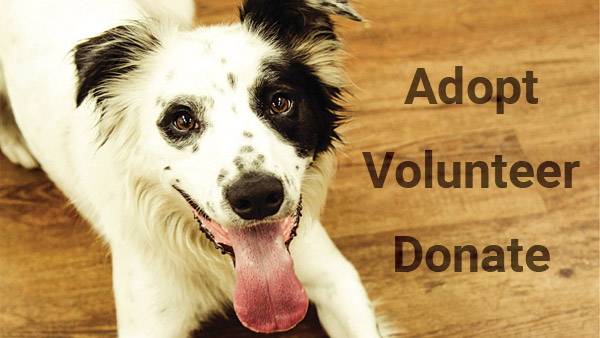Teaching Your Dog to Do a U-Turn
- This topic has 0 replies, 1 voice, and was last updated 13 years, 10 months ago by
Mackenzie’s Admin.
-
AuthorPosts
-
June 17, 2010 at 4:05 pm #537
Mackenzie’s Admin
MemberDuring on-leash walks with their pet parents, some dogs stay quiet and calm, seemingly oblivious to the world’s many sights and sounds. However, other dogs get excited or upset when they encounter people, other animals or even moving objects. These dogs may bark, lunge, spin in circles, bite their leashes in frustration or try to run away. Some are simply excited and want to play. Some are driven to hunt and chase, especially if something or someone passes by rapidly. Some become frightened and feel compelled to flee.
Reactive on-leash behavior can be embarrassing to pet parents and stressful for everyone. The steps you’ll take to treat the underlying problem that causes this kind of behavior will depend on both why and how your dog reacts. (For detailed information about specific behavior problems that often cause reactive on-leash behavior, please see our articles on Fear of People, Fear of Objects, Fear of Other Animals, Neophobia (Fear of New Things), Fear of Children, Fear of Noises, Predatory Behavior in Dogs, Dogs Chasing Cars, Dogs Chasing Runners, and Dogs Chasing Bicycles, Skateboards and Other Moving Things.) But no matter what kind of treatment you use on the road to resolution, you’ll need to be able to manage your dog’s on-leash behavior in the meantime. The best way to do that is to teach him a more appropriate reaction to the things, people or animals causing him excitement or distress. If your dog learns to do an abrupt u-turn on cue (command), both of you can quickly and calmly change direction, avoiding problematic situations should they suddenly arise.
U-Turn Training Steps Getting Started
Initially, you’ll need to teach your dog the u-turn inside, in a relaxing, familiar place. Put a leash on your dog and take him to a quiet hallway or room.Start walking with your dog in a straight line.
After three or four steps, say “This way!” in an upbeat voice. Then reach down with the hand closest to your dog and hold a tasty treat right in front of him. As he sniffs it, turn around and walk in the opposite direction, using the treat like a magnet in front of your dog’s nose to lead him along with you. Make sure you don’t jerk or pull your dog with the leash. You should be able to guide his movement as he follows the tasty treat with his nose. If he doesn’t sniff and nibble at the treat, use something more exciting and delicious. Try a small piece of hot dog, cheese or chicken.
After you and your dog have made the u-turn and walked a couple of steps, you can give him the treat.
Practice the sequence above until your dog quickly whips around to walk in the opposite direction as soon as he hears you say the cue “This way!” Eventually, you won’t have to use the treat on his nose anymore to lead him, but do continue to give him a treat after the two of you have changed directions and walked a few steps.Taking It on the Road
When your dog becomes a u-turn pro in your quiet training place, start practicing the behavior when the two of you take walks together. Since exciting sights and smells outside will distract your dog, you’ll probably need to hold a treat right in front of his nose again at first. Once he gets used to practicing his new trick outdoors, you can stop using the treat to guide him. However, do continue to reward him with a treat after he performs the u-turn. You can also reward your dog by running a few steps before giving him his treat. This makes the u-turn feel like a fun game—and when you start to use it in real-life situations, a short sprint will get you away from whatever upsets your dog even faster!Real-Life Training
Once your dog has learned how to do a u-turn outside with no distractions, you can start incorporating low-excitement triggers into your training. Start practicing with a trigger about 15 feet away—or as far away as it needs to be for your dog to notice but not react to it. As your dog gets better at the u-turn, you can gradually move closer and closer to the trigger before turning around to walk in the opposite direction.Training Tips
If your dog’s reactive behavior is triggered by people, recruit the help of friends and family whom you dog knows and likes.
If the behavior is triggered by other dogs, ask friends who have dogs to help with training. If possible, practice first with dogs whom your dog knows and likes.
If moving objects excite your dog, recruit the help of friends who skateboard, use inline skates or ride bikes. Ask your helpers move around slowly at first. As your dog gets better and better at the u-turn, they can gradually increase their speed.
If your dog’s reactive behavior is triggered by something you can’t control, like squirrels or cars, practice the u-turn in the areas where you usually see the triggers, even if there are none there at the time.
A dog will often look at something intently but not react until he’s quite close to it. Practice making the u-turn before your dog reacts to triggers.
Practice in many different places so that your dog can quickly perform the u-turn—no matter where you are.Using the U-Turn When You Need It
After you teach and practice the u-turn for a few weeks, you can try using it if you and your dog suddenly encounter something that excites, frightens or upsets him. Be sure to keep some tasty treats in your pocket whenever you and your dog go out into the world. String cheese is a good choice because it’s very tasty, keeps for a long time and comes in tidy, pre-wrapped pieces.The first few times you use the u-turn when you unexpectedly encounter a trigger, you might have to go back to holding a treat in front of your dog’s nose to lead him away. If you say “This way!” and your dog doesn’t turn toward you immediately, just repeat “This way!” in a happy voice, and get out a big treat to put in front of his nose. When he turns around with you and you’re able to give him the treat, be sure to tell him how brave and smart he is and how happy you are that he came with you.
If your dog has noticed something and looks at it for more than two seconds, he’s probably thinking about interacting with it or reacting to it in some way. If you get in the habit of breaking his gaze before those two seconds are up, he’ll be much less likely to react. It’s better to give your dog the u-turn cue early—right when you see that he’s interested in a potential trigger.
Remember to stay calm and to keep your voice upbeat—even if your dog barks, lunges or growls. If he reacts poorly to something or someone, it just means that you didn’t ask him to perform a u-turn quickly enough.The U-Turn Won’t Fix Your Dog’s Problem
Remember that the u-turn is a management tool. It’s intended to make your dog’s reactive behavior easier to control. In some cases, it may improve a dog’s reactions to things that arouse him, but it’s not the same thing as treatment. You’ll still likely need to address your dog’s specific underlying behavior problem. For problems that involve fear or aggression, especially if your dog’s reactions are directed toward children, people or other dogs, it’s best to seek help from a qualified professional. Please see our article on Finding Professional Help for information about locating an experienced expert in your area. -
AuthorPosts
- You must be logged in to reply to this topic.

